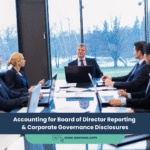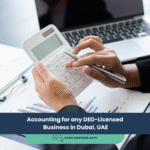Accounting for a Property Management Firm: Choosing and Integrating the Right Property Management Software
A property management firm is the operational and financial hub for a portfolio of real estate assets. You are responsible for everything from tenant relations and maintenance requests to rent collection and owner distributions. In this complex environment, trying to manage operations with generic spreadsheets and basic accounting software is a recipe for inefficiency, errors, and frustrated clients. The key to scalable growth and profitability lies in a single, powerful tool: specialized property management software.
- Accounting for a Property Management Firm: Choosing and Integrating the Right Property Management Software
- Why Generic Accounting Software Fails Property Managers
- Choosing Your Software: Core Accounting Features to Demand
- The Integration Process: A Step-by-Step Approach
- What Excellence Accounting Services (EAS) Can Offer
- Frequently Asked Questions (FAQs)
- From Manual Chaos to Automated Control.
Choosing and integrating the right software is arguably the most critical technology decision a property management firm will make. The right platform automates tedious tasks, provides real-time visibility into portfolio performance, and creates a seamless link between operations and finance. It transforms the accounting department from a reactive bookkeeping function into a strategic partner for the business.
This guide will walk you through the essential accounting-focused features to look for in property management software and the critical steps for integrating it into your financial workflow. We’ll cover how this technology revolutionizes everything from rent collection to owner reporting, ensuring your firm is built on a solid foundation of efficiency and control.
Key Takeaways
- All-in-One is the Goal: The ideal software combines operational features (tenant portals, maintenance tracking) with a robust, property-specific accounting module.
- Key Accounting Features: Look for automated rent collection, CAM reconciliation, trust accounting compliance, and detailed owner reporting capabilities.
- Integration is Everything: The software must either have a strong built-in general ledger or offer seamless, two-way integration with your primary accounting system (like Xero or QuickBooks).
- Data Migration is a Critical Step: Planning the migration of tenant ledgers, lease data, and historical financials into the new system is a major project that requires careful execution.
- Scalability Matters: Choose a solution that can grow with your portfolio, from a few dozen units to several hundred or more.
Why Generic Accounting Software Fails Property Managers
While standard accounting software is great for many businesses, it falls short for property management because it lacks the industry-specific functionality needed to manage the complex relationships between tenants, owners, and properties. Key challenges include:
- Trust Accounting: Property managers handle funds that don’t belong to them (tenant security deposits, owner funds). This requires strict trust accounting to keep these funds segregated from operating capital, a feature absent in most generic software.
- Property-Level P&L: Owners need to see a clear Profit & Loss statement for their specific property. Generating this easily from a standard chart of accounts is cumbersome.
- CAM Charges: Calculating and allocating Common Area Maintenance (CAM) charges in commercial properties is a complex process that generic software cannot automate.
- Lease Tracking: Managing lease start/end dates, rent escalations, and renewals is an operational task that drives all financial activity.
Choosing Your Software: Core Accounting Features to Demand
When evaluating software options from providers like Yardi, AppFolio, or Buildium, the accounting module should be a primary focus. Here are the non-negotiable features:
| Feature | Why It’s Critical for Accounting |
|---|---|
| Integrated General Ledger | Provides a single source of truth. All operational activities (rent payments, maintenance costs) automatically create the correct accounting entries, eliminating manual data entry and errors. |
| Automated Rent & Fee Collection | Streamlines your entire accounts receivable process. Allows tenants to pay online via ACH or credit card, automatically recording the payment and handling late fees. |
| Robust Owner Reporting | The system should be able to generate clean, professional, and customizable statements for each property owner at the click of a button, showing income, expenses, and net distribution. |
| Vendor & AP Management | Allows you to manage vendor bills, track maintenance expenses per property, and process payments directly from the system, providing a full audit trail for your accounts payable. |
| Bank Reconciliation Tools | The software should connect directly to your bank feeds (including separate trust accounts) to make bank reconciliations faster and more accurate. |
The Integration Process: A Step-by-Step Approach
Implementing new software is a major project. A disciplined approach is essential for a smooth transition.
- Planning and Selection: Define your needs, shortlist vendors, and get detailed demos. This is the time to involve your entire team, from leasing agents to accountants.
- Data Migration: This is the most challenging step. You need a clear plan to migrate all existing data: property details, unit information, lease agreements, tenant ledgers, and owner information. This often requires professional support from accounting system implementation experts.
- System Configuration: Set up your chart of accounts, fee structures, reporting templates, and user permissions within the new software.
- Training: Ensure every member of your team is thoroughly trained on how to use the new system for their specific role.
- Go-Live and Support: Choose a “go-live” date (often the first of a month) and ensure you have strong technical support from the software vendor during the initial weeks.
Your property management software isn’t just a tool; it’s the central nervous system of your entire operation. Its successful integration is a direct investment in your firm’s future profitability and scalability.
What Excellence Accounting Services (EAS) Can Offer
Choosing and implementing a new property management system is a strategic project with long-term financial implications. Excellence Accounting Services can provide the expertise to ensure you make the right choice and have a successful implementation.
- Software Selection Advisory: We help you analyze your business needs and evaluate leading software options from an accounting and financial control perspective.
- Implementation & Data Migration Project Management: Our team can manage the entire implementation process, with a special focus on the accurate and complete migration of financial data.
- Chart of Accounts Design: We help you design a property-specific chart of accounts within your new system to enable powerful, granular financial reporting.
- Process & Control Integration: We assist in redesigning your internal workflows for rent collection, payables, and owner distributions to leverage the full power of the new software, supported by our internal audit expertise.
- Outsourced Accounting Services: Once the system is live, our team can manage your day-to-day property accounting, owner reporting, and bookkeeping, allowing you to focus on growing your portfolio.
Frequently Asked Questions (FAQs)
Trust accounting is the legal requirement to keep funds held “in trust” for others (like tenant security deposits and owner rent collections) in a separate bank account from your firm’s operating funds. Commingling these funds is a serious breach of regulations set by bodies like Dubai’s Real Estate Regulatory Agency (RERA). Good software has built-in safeguards to manage this correctly.
For most dedicated property management firms, an all-in-one system with a strong, built-in accounting module is superior. It creates a single database and eliminates the potential for sync errors between two systems. An integration can work, but it adds a layer of complexity.
Pricing models vary. Most are subscription-based, often priced “per unit per month.” Costs can range from under a dollar to several dollars per unit, depending on the software’s features and the size of your portfolio.
By centralizing all your revenue and expense data, the software makes it much easier to generate the reports needed for your VAT and Corporate Tax filings. It provides a clear, auditable trail of all financial transactions, which is essential for compliance.
Most leading platforms can, but their strengths may vary. If you manage commercial properties, ensure the software has robust features for handling CAM (Common Area Maintenance), NNN (Triple Net) leases, and complex lease clauses.
Cleaning up your existing data. Before you can import data into a new system, it must be accurate and consistently formatted. This often means manually reviewing and correcting years of tenant ledgers and lease information from old spreadsheets, which is a time-consuming but critical task.
Yes, this is a key feature of modern systems. An owner portal provides your clients with 24/7 access to financial reports, maintenance updates, and important documents for their properties, which greatly enhances transparency and client satisfaction.
It allows tenants to submit maintenance requests online, which can then be assigned to vendors, tracked, and invoiced all within the system. This creates a complete record of all maintenance costs for each property, which flows directly into the accounting ledger.
This is an important consideration. Ensure that any software you choose allows you to easily export your data in a standard format (like .csv or .xls). Being “locked in” by a vendor who makes it difficult to retrieve your data is a major risk.
Even for a small portfolio, the efficiency gains and improved financial control are significant. Starting with a scalable, professional system early on establishes good habits and builds a foundation that will allow your business to grow without being hindered by administrative chaos.
Conclusion: Building a Scalable Financial Engine
For a property management firm, operational efficiency and financial accuracy are two sides of the same coin. The right technology binds them together. By investing in a robust, integrated property management software and taking a disciplined approach to its implementation, you are not just buying a tool. You are building a scalable financial engine that will reduce manual work, enhance client trust, and provide the clear insights needed to drive your business forward.
From Manual Chaos to Automated Control.
Let Excellence Accounting Services help you select, implement, and manage the perfect software solution for your portfolio.




